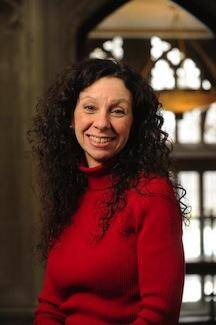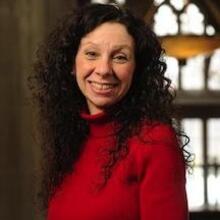It’s 7 a.m., and I miss the bells.
I’ve just returned from a week’s writing residency at the Collegeville Institute, located on the campus of St. John’s University in rural Minnesota. The apartment I lived and wrote in, set on a lake beneath a canopy of trees, is just down the hill from St. John’s Abbey Church, one of the most strangely beautiful churches I have ever seen. Each morning during my residency, the bells on the monumental abbey bell banner would begin ringing at 6:50 calling the monks—and all in earshot—to prayer.
On some of those mornings, not quite fully awake and barely fit for human company, I could not resist their insistent beckoning. They would pull me away from my books, away from my cup of steaming coffee, away from my flagstone porch where I would perch, watching the mist rise up off the lake, listening to the loons carry on their wild and raucous talk in the merry air.
On some of those mornings, I would pull on my jeans, strap on my sandals, and walk the half mile, briskly, to take my place in the dark stalls among the monks. It was a little pilgrimage—climbing that steep hill, the abbey church towering at the top, the highest point in the landscape, the bells enormous magnets drawing me upward on their waves of powerful sound.
I’d arrive at the church, push open the heavy planked door and make my way to the altar, a grand, sparse space that looks for all the world like a dais for human sacrifice. The first time my mind made this association, I was troubled, but then, as I recalled the nature of the Eucharist, the violent events it conjures and redeems, it seemed the perfect place to consecrate the body and blood of Christ and celebrate the Christian sacrifice.
St. John’s belongs to the Benedictines. They have been living, teaching and praying the divine office here every day, on the edge of Lake Sagatagan, for over 150 years. Before that, they prayed in nearby St. Cloud along the Mississippi River, in Latrobe, Pa., and in the countryside of Bavaria. They brought their zeal for God to the people who lived here—teaching the students who came to them, conducting their ministry in the surrounding communities and performing the miraculous act, in this world of surge and urgent change, of staying still. The first vow the Benedictine takes is that of stability. Here he lives his whole life. And when he dies, his brothers bury him in the hillside, just as he has buried his brothers before him.
The monks welcome the stranger, as do those morning bells. This is their charism, and they practice it with grace and ease. When I arrive at the choir stall, an elderly brother, assigned to the task of acclimating visitors, makes his way toward me. He is bright-eyed, vigorous, kindly as he locates the psalms we’ll be chanting, flips though Scripture, thumbs the well-worn pages of prayers, an expert. Soon the prayer begins—“Lord, open my lips”—and I am pulled along by the tide of voices as surely as I was pulled by the bells, out of my apartment, out of my books, out of my own solitary writings and into communal recitation of some of the oldest words we humans know. “And my mouth shall proclaim your praise.”
After morning prayer, the remainder of my day seemed sanctified. I’d return to my writing desk to work on my current project, a biography of Flannery O’Connor. She too began each day with Prime. She too labored over language, trying to find the right words to tell stories that needed to be told. She, too, knew the pull of the bells, the ways one is called out of daily-ness, the concerns of the body (feeding it, resting it, dressing it) and the concerns of the mind (stretching it, focusing it, disciplining it) to attend to the needs of the soul. It felt as if we had walked to the abbey together—that she had braved the hill, even on crutches—that the elderly monk had welcomed two strangers that morning, and that we had all prayed together, in the company of the saints, both living and dead.
Today I am back home in New York, a thousand miles from St. John’s Abbey. Today I’ll return to my office to catch up on work I neglected during my writing residency. Far away as I am from that place, I carry it within me today, and will do so as long as I can.
It’s 7 a.m., and I hear the bells.








